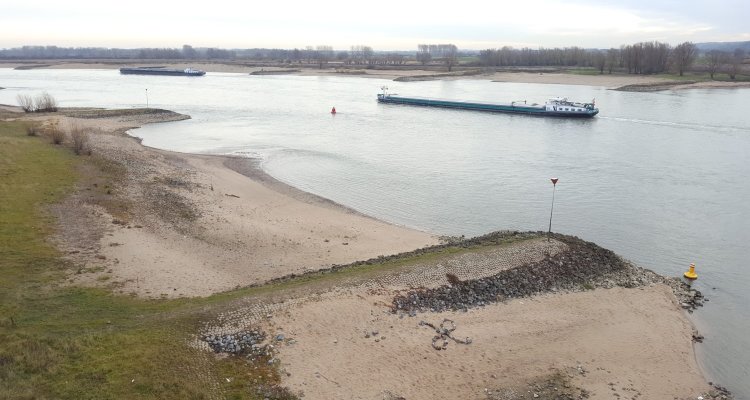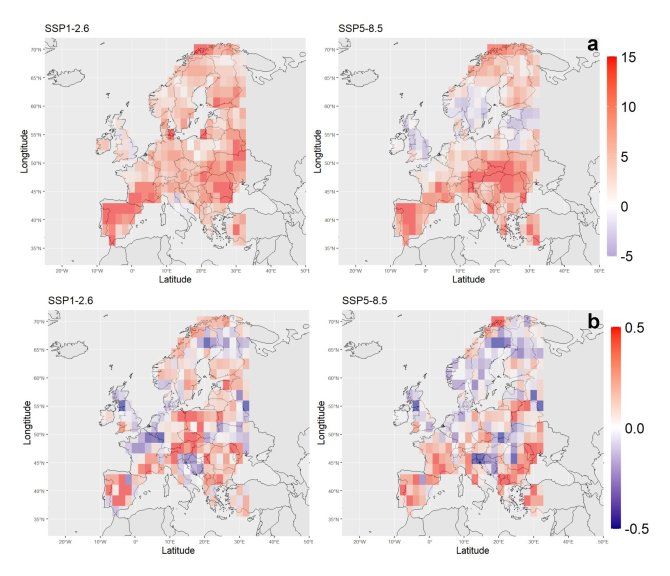
Project
Developing novel machine learning algorithms for predicting future compound drought and heatwave impacts in Europe
A study predicting the impacts of combined drought and heatwave hazards (compound) under future warming is still missing. This research aims to develop novel algorithms for predicting compound drought and heatwave impacts using machine learning approaches. The outputs will contribute to mitigation and adaptation strategies and to minimising the impacts of compound hazards.
Human and economic losses caused by drought have continued to rise due to climate change. The impacts of drought are intensified when more hazards occur simultaneously in the same place (compound). For example, the European droughts of 2003, 2010, and 2018, although not the most severe droughts in history, are nevertheless considered as one of the most fatal and costly events of all in combination with the occurrences of heatwaves and fires. The impacts of compound drought and heatwave events (CDH) will be higher in the future due to an increase in the probability of these events in the warming world we are experiencing. Most research on drought and heatwaves is mainly concentrated on the occurrences of past events, forecasting of these hazards, and projecting the future events of single hazards only and ignoring CDH events. More importantly, no impacts of these extreme events have been predicted. Information on the impacts of CDHs is crucial for climate adaptation, as these impacts are the ones that we want to prepare for.
Project description
Predicting future CDH events and their associated impacts e.g., in agriculture, ecosystems, energy and industry, and water borne transportation is possible but requires novel approaches. Machine learning (ML) approaches have been used in drought studies to predict historical drought hazard occurrences, develop drought impact functions, and forecast drought impacts. These techniques, therefore, offer a new opportunity for predicting future CDH impacts.
The objective of this research is to develop algorithms for predicting future CDH impacts using ML approaches under different Shared Socioeconomic Pathways (SSPs) scenarios, which has never been done before. Drought hazard is defined using the standardized soil moisture index and heatwaves are defined as an event during which both daily maximum and minimum air temperatures in summer exceed the corresponding climatological 90th percentile for 3 days or longer. The historical CDH hazard occurrences are quantified by combining hazard indices. These hazards incl. CDH and binary time series of reported impacts taken from the European Drought Impact Inventory (EDII) will be used as the predictors and the response variables, respectively, to train the ML algorithms. The result is impact algorithms that will be evaluated using the impact database to develop best performance algorithms. The resulting algorithms are then run using the projected hazards as predictors to obtain the likelihood of impact occurrences.
Results
The expected results generated by this project are 1) Maps showing both future single and compound hazard hotspots, 2) a dashboard consisting of drought and heatwave impact databases for Europe, 3) ML algorithms for predicting future CDH impacts, and 4) a scientific publication on CDH impact in Europe.
The first step of this project is to identify the future of hazard hotspots, which has been done for one single climate model (Figure 1). This Figure shows that southern European countries will experience compound DH more than two times more often than in the past. Similar results are also seen for average duration, where southern Europe will suffer longer compound DH duration of 6 days (0.2 month). The second to fourth steps will be done before the end of the project. The impact database is now being compiled and next action is making a dashboard.
